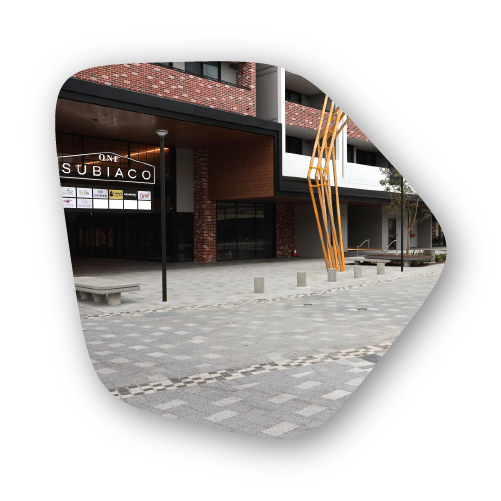
Top tips from the experts when it comes to cleaning and caring for your tiles
Tiles are extremely versatile and can be used in a variety of applications. They are strong, long-lasting, and come in endless materials, styles, and sizes. But like most things, if you want them to last and preserve their appearance, they need to be looked after. Worry not, tiles are easy to clean and maintain, so you don’t have to dedicate hours of your time each week to clean them.
The cleaning methods for different tiles
How you clean your tiles and which cleaning products are appropriate will depend on the type of tiles you have. Listed below are various tile types and the corresponding cleaning process involved with each.
Porcelain and ceramic tiles
One of the main reasons porcelain and ceramic tiles are so popular is because of their lifespan and how little effort is needed to keep them looking great. Here’s how to clean your porcelain and ceramic tiles:
Remove and dirt and debris from the surface
Firstly, you need to remove any dirt and debris that’s on the surface by using a vacuum or broom. It’s important to do often as the abrasive nature of dirt and debris can give your otherwise shiny tiles a matte appearance.
Remove any stains
It’s always recommended that you clean up any spills immediately after they occur to prevent them from staining your tiles however if your tiles already have marks and stains, you should use a suitable stain remover to treat them. Ensure you follow the directions listed on the instructions to prevent damaging the surface of your tiles.
Mop
As you probably know, there are numerous mops types out there, and some work better on some surfaces than others. To get the best result, you should use a chamois mop. While all mop types will essentially clean your tiles, other types are notorious for pushing dirt into the grout which can be troublesome to remove. Changing the mop water as necessary along with using the correct dose of tile cleaner, will prevent smudge marks.
Dry mop
Using a dry, clean mop, run it across your freshly mopped floors, this will not only make it safer to walk on, but it prevents water from collecting in spots.
Stone tiles
Natural stone tiles require a little extra attention and care when cleaning. Harsh cleaners that may be well-suited to other tiles, typically aren’t suited to natural materials. Here are some common stone tiles and how to clean them correctly:
Granite Tile
To clean your granite tiles, a pH-neutral detergent should be used. To make them extra shiny, you can buff them afterwards. Using strong chemicals on your granite can risk discoloration and damage.
Slate tile
A mild detergent with no acidic ingredients, even natural ones, is appropriate to use on slate tiles. Once you’ve cleaned your slate tiles, drying them off is recommended to prevent water spots.
Marble tile
Marble tiles, while stunning, are one of the most high-maintenance tile choices. To clean them, a soft-bristled brush or dust mop should be used to pick dirt and debris. A vacuum cleaner can scratch the surface. Harsh cleaners and anything that contains acidic ingredients shouldn’t be used. pH neutral dish soap is recommended. Make sure your mop isn’t sopping wet, only damp and remove any excess moisture after mopping with a dry soft towel or mop.
Resilient tiles
Resilient tiles are often installed in place of real tiles. Many resemble the look of real tiles but they are made from more economical materials, making them an affordable option for those on a budget. Here are some common resilient floor tile materials and how to look after them:
Vinyl tile
Vinyl tiles offer superior performance for minimal cost. All they need is a vacuum or sweep and a clean with a mop and water/vinegar mixture. Harsh chemicals should be avoided on this material to prevent premature wear and damage.
Linoleum Tile
Linoleum tiles require more effort than vinyl tiles and to keep them looking great year-round, you should regularly remove debris and dirt before cleaning with an appropriate floor cleaner or borax and water. Using water only, remove any residue and dry the floor. Leaving excess moisture on your linoleum floors can shorten their lifespan significantly.
Cork Tile
There are a couple of different ways you can clean cork tiles, and the method will vary depending on which type of finish you have on them. Most cork floors can be cleaned using water and vinegar or water and a detergent mixture. Once mopped, the surface should be rinsed with water only. Drying the surface after cleaning is advisable.
The resilient tile options that we’ve mentioned above cannot withstand exposure to high heat or excessive moisture, so make sure the products you are using are suitable for use on this material.
We hope this post has given an idea of how to clean some of the most common tile options. If in doubt, it is a good idea to ask your floor installer or a professional for advice. Using the wrong products and equipment can damage your floor and make it look unkempt. Not only that, replacing or repairing flooring can be expensive, so you want to avoid this happening if you can. With a little TLC now and then, you can have your tiles looking brand-new throughout the year.






